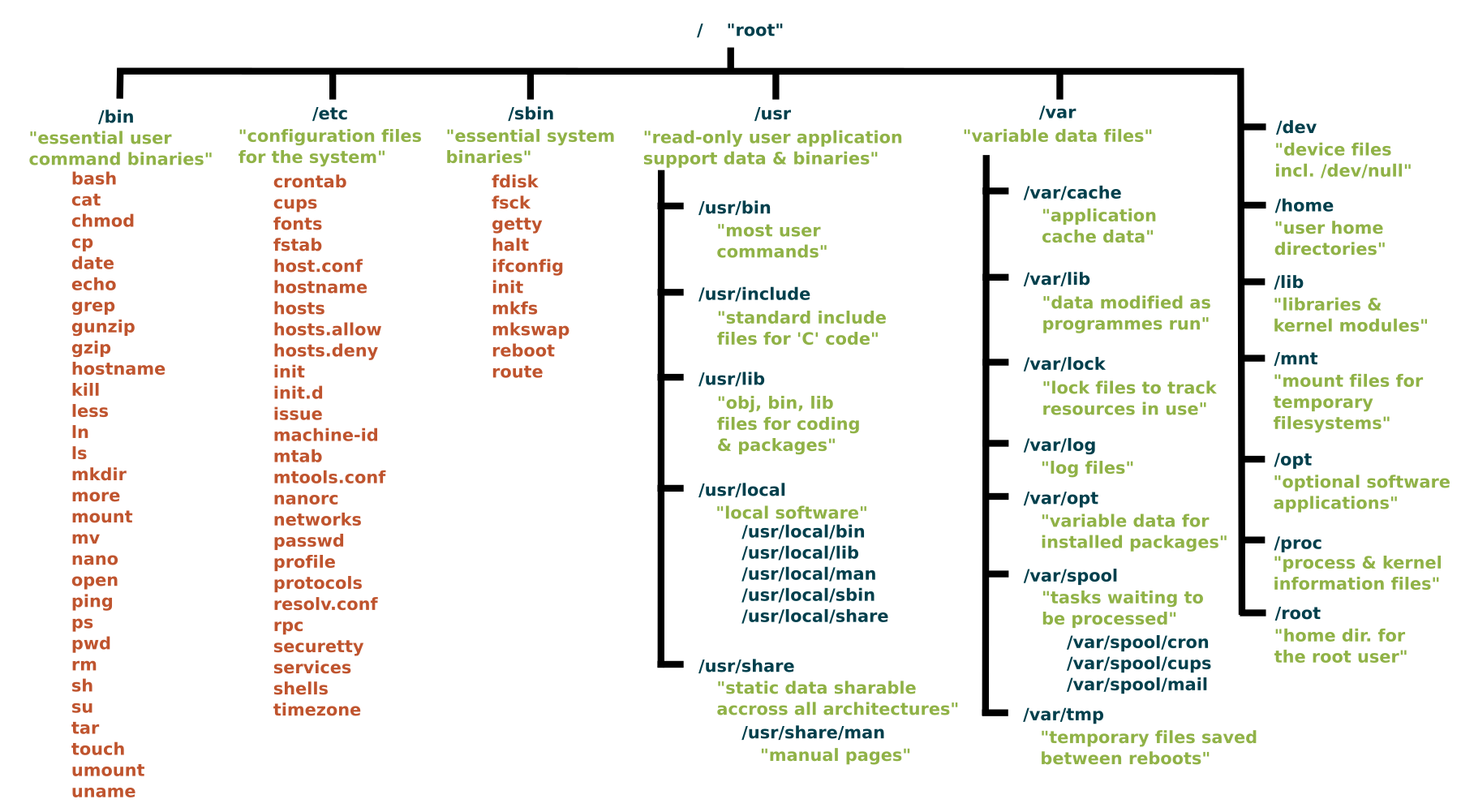Learn the Linux File System: Why It's Important for DevOps Starters
 Prabhat Chouhan
Prabhat Chouhan
Saturday, 31 August 2024

Why Learning the Linux File System Helps in DevOps
If you're interested in DevOps, understanding the Linux file system is crucial. Many DevOps tools and environments are built on Linux, and knowing how the file system works will make you more effective at managing servers, automating tasks, and troubleshooting issues. By mastering the Linux file system, you'll have a solid foundation for working with technologies like Docker, Kubernetes, and continuous integration/continuous deployment (CI/CD) pipelines.
Have you ever wondered how your computer organizes all the files and folders? If you're curious about how Linux, a popular operating system, manages its files, you're in the right place! In this blog post, we'll explore the Linux file system.
What is a File System?
A file system is like a big cabinet with many drawers and folders inside it. It helps your computer keep everything in order so you can find and use your files quickly. In Linux, the file system has a special structure that makes it very efficient and powerful.
The Root Directory: "/"
Imagine the root directory, "/", as the top drawer in our big cabinet. Everything starts here. It's like the main folder where all other folders and files are stored. When you open the root directory, you'll see many other important folders inside it.
Important Directories in Linux
Here are some of the key directories you'll find in the Linux file system:
/bin: This folder contains essential programs that your computer needs to run. Think of it as a drawer with important tools like screwdrivers and hammers. For example, the
lscommand, which lists files in a directory, is located here./home: This is where your personal files and folders are stored. Each user on the computer has their own folder inside /home. It's like having your own drawer in the cabinet. For example, if your username is Alex, your personal files will be in
/home/alex./etc: This directory holds configuration files that tell the computer how to work. It's like the instruction manuals for your cabinet. For instance, the
passwdfile in/etcstores information about user accounts./var: This folder contains files that change frequently, like logs and temporary files. It's like a drawer where you keep things that you often update or replace, such as receipts or notes. For example,
/var/logstores log files that record various system activities./usr: This stands for "user." It contains software and libraries that are shared among all users. Imagine it as a communal drawer everyone can use. This directory includes applications and their related files, like documentation and libraries.
Paths: Finding Your Way Around
In Linux, we use paths to find files and folders. A path is like a map that shows you how to get to a specific file. For example, if you want to find a file in your home directory, the path might look like this: /home/alex/document.txt. You can think of it like following directions to a specific drawer and folder in your cabinet.
Permissions: Who Can Access What?
Linux also has a system of permissions that controls who can read, write, or execute files. It's like having locks on your drawers. There are three types of permissions:
Read (r): Allows you to look at the contents of a file.
Write (w): Allows you to change the contents of a file.
Execute (x): Allows you to run a file as a program.
Each file and folder has permissions for the owner, the group, and everyone else. For example, if a file has permissions rwxr-xr--, it means the owner can read, write, and execute it; the group can read and execute it; and others can only read it.
Why the Linux File System is Awesome
Organization: The Linux file system is well-organized, making it easy to find and manage files. For instance, knowing that configuration files are in
/etchelps you quickly locate system settings.Security: With permissions, you can control who accesses your files, keeping your information safe. This means you can protect sensitive files from being changed or read by unauthorized users.
Efficiency: The structure of the Linux file system helps your computer run smoothly and quickly. Having a clear organization means the system can find and access files faster.
Fun Fact: The Penguin Connection
The mascot of Linux is a penguin named Tux. Just like a penguin can navigate through icy waters, the Linux file system helps you navigate through your files efficiently!
Understanding the Linux file system can seem tricky at first, but it's really just about knowing where things are and how to access them. Think of it as exploring a well-organized cabinet where everything has its place. With a little practice, you'll be navigating through Linux like a pro!
How Learning the Linux File System Helps in DevOps
As we mentioned at the beginning, mastering the Linux file system is essential for anyone interested in DevOps. It provides the foundation for managing servers, automating tasks, and ensuring efficient workflows. Whether you're setting up CI/CD pipelines or deploying applications in Kubernetes, a solid understanding of the Linux file system will make your job easier and more effective.
If you have any questions or want to learn more about Linux, feel free to reach out. Happy exploring!
Subscribe to my newsletter
Read articles from Prabhat Chouhan directly inside your inbox. Subscribe to the newsletter, and don't miss out.
Written by

Prabhat Chouhan
Prabhat Chouhan
I’m a Cloud/DevOps enthusiast currently learning how to build and manage reliable, scalable solutions. I’m excited about exploring modern technologies and best practices to streamline development and deployment processes. My aim is to gain hands-on experience and contribute to creating robust systems that support growth and success in the tech world.